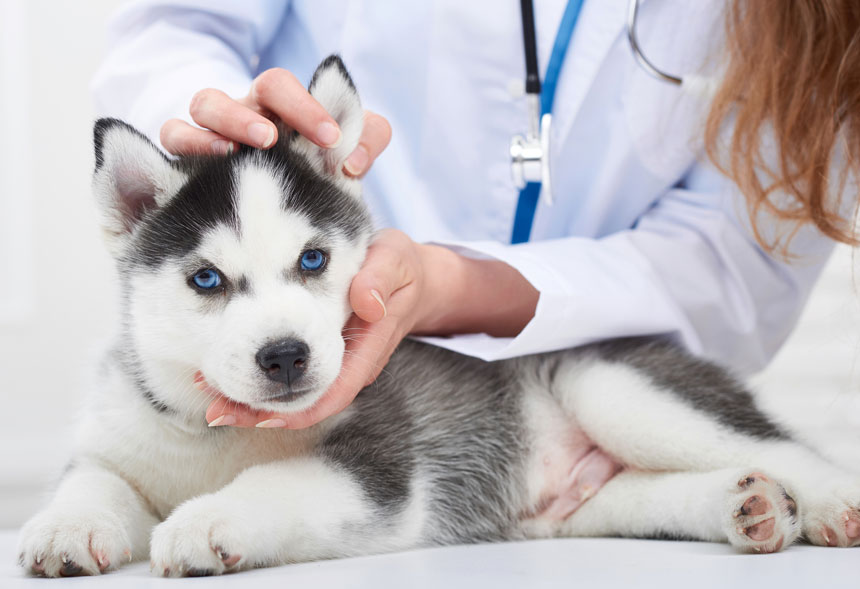The Siberian Husky

The Siberian husky is a northern breed dog with a thick, double coat that helps keep him cozy and warm in cold areas. And huskies love to be outside when it's cold and play in the snow.
Of course, at DogHealth.com, we support pet adoption, so if you're considering a purebred husky, we hope you'll check your local shelters and breed-specific rescue groups.
Siberian Husky Personality Traits
In 1925, a team of Siberian huskies pulled a sled at a shocking pace across Alaska's frozen tundra to deliver diphtheria antitoxin to Nome in an attempt to save lives during an outbreak. From then on, the breed was beloved in America.
Huskies are friendly dogs and usually don't make good guard dogs, but they are fabulous companions in the right situation.
Note: The information in this article is of a general nature and may not apply to individual members of the breed.
Having been bred to work, huskies are high energy dogs that must have lots of exercise every day or they will develop destructive behaviors like tearing up items in the home. They generally get along well with other dogs but may be dangerous to cats.
Huskies are often noisy, prone to whining and howling.
If you have a Siberian husky, you will need to use caution when leaving them outside alone. They are excellent diggers and climbers, so even a tall, sturdy fence may not keep one in if they become bored and wish to wander.
Siberian Husky Physical Traits
Huskies have short hair but it's thick, with a double coat, and these dogs shed all year. Frequent brushing can help deter some of the hair from ending up in your home.
Siberian huskies often have blue eyes, but they can be brown or mixed.
Some health conditions that Siberian huskies are more prone to than other breeds include:
- Hip dysplasia—this genetic malformation of the hip joint can cause pain and lameness throughout life. Various treatments, including surgery, are available.
- Juvenile cataracts—this type of cataract causes the lens to begin clouding before the dog is two years old. Surgical removal of the cataract can fix the problem.
- Corneal dystrophy—this eye condition involves clouding of the cornea, which is the outer surface of the eye. It can cause blindness.
- PRA: Progressive retinal atrophy—this retinal condition usually eventually causes blindness.
You May Also Like These Articles:
The German Shorthaired Pointer
Why Are There More Body Variations in Dogs Than Cats?
Disclaimer: This website is not intended to replace professional consultation, diagnosis, or treatment by a licensed veterinarian. If you require any veterinary related advice, contact your veterinarian promptly. Information at DogHealth.com is exclusively of a general reference nature. Do not disregard veterinary advice or delay treatment as a result of accessing information at this site. Just Answer is an external service not affiliated with DogHealth.com.
Notice: Ask-a-Vet is an affiliated service for those who wish to speak with a veterinary professional about their pet's specific condition. Initially, a bot will ask questions to determine the general nature of your concern. Then, you will be transferred to a human. There is a charge for the service if you choose to connect to a veterinarian. Ask-a-Vet is not manned by the staff or owners of DogHealth.com, and the advice given should not delay or replace a visit to your veterinarian.



